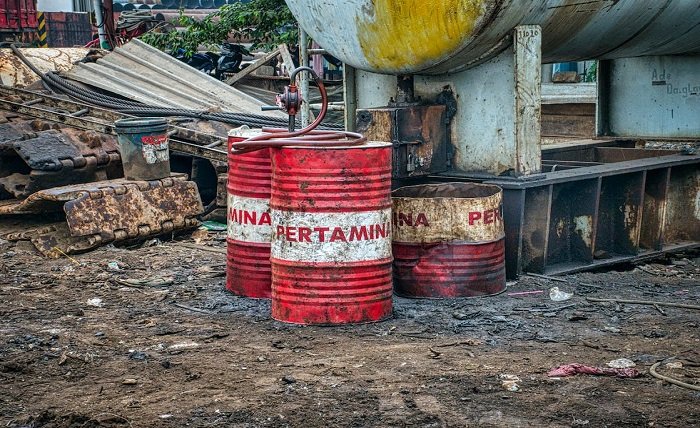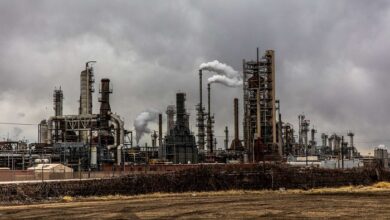PCB Health Effects: How Safe Is It for the Human Body?

Remember those old transformers humming on street corners, or the buzzing fluorescent lights in your childhood classroom?
That nostalgic memory once relied on a hidden ingredient: polychlorinated biphenyls, better known as PCBs. This man-made group of 209 individual chemicals, known as congeners, were once widely used as industrial chemicals. However, they have now been banned following reports about their effects on human health and the environment.
But what exactly are the health risks of being exposed to PCBs? And how might you limit your exposure?
This article will provide an overview of the recent research on PCBs and their health effects.
Understanding PCBs
PCBs are a group of synthetic chemicals that were once commercially produced from the 1920s up to the 1970s.
They were classified as chlorinated hydrocarbons and used as coolants, lubricators, and insulators in electrical equipment and construction materials. Before their ban, these chemicals were everywhere–in the air, water, soil, animals–you name it.
However, the EPA soon banned their manufacturing in 1979 under the Toxic Substances Control Act (TSCA) after observing that these chemicals accumulate in the environment and living tissues, resisting breakdown for many years.
Yet, some legacy PCBs linger in some older buildings and hazardous waste sites. They also accumulate up the food chain, so the primary exposure risk today comes from eating contaminated foods.
Health Effects of PCB Exposure
Numerous health effects have been associated with PCB exposure. Short-term, high-level exposure can lead to liver damage and skin conditions like acne, and rashes.
But the bigger concern is the effects of long-term exposure.
Several studies have linked PCBs to increased risks of cancer, including cancers of the liver, biliary tract, intestines, and skin melanoma. The EPA has listed PCBs as known human carcinogens. Some research also points to a link between PCB exposure and brain, lung, and breast cancers.
Beyond cancer, PCB exposure symptoms also extend to hormone disruption, reproductive issues, developmental effects in children, and problems with immune system functioning.
Certain health conditions associated with PCB exposure include the following:
- Decreased fertility and increased risk of miscarriage
- Birth defects related to neural tube, cardiovascular, and urogenital development
- Thyroid dysfunction and altered hormone levels
- Changes in liver function and enzyme levels
- Impaired immune responses
- Cognitive deficits and motor difficulties in infants and children
Sources of PCB Exposure
Today, diet makes up over 90% of exposure to PCBs for the general population. The highest contamination levels are found in fish, shellfish, meat, and dairy products. People who regularly eat fish from contaminated lakes, rivers, or bays ingest the highest amounts.
Other sources include:
- Occupational Exposure: Individuals who handled PCBs regularly, such as electrical workers, mechanics, and chemical plant employees, might have been exposed to PCBs. Exposure to toxic vapors, direct skin contact, or ingestion are possible exposure pathways.
- Older buildings where PCB-containing sealants, paints, or electrical equipment are present
- Neighborhoods near hazardous waste sites or factories where PCB was produced
- Breast milk of exposed mothers
Vulnerable Populations
According to the Centers for Disease Control and Prevention (CDC), individuals who rely on subsistence fishing as a large part of their diet are at a higher risk. Fetuses, infants, and children who have less-developed detoxification systems and are undergoing rapid growth and development are also at risk. PCB exposure early in life is another concerning factor.
Moreover, the following occupations, involve greater exposure to legacy PCB sources:
- Construction and demolition work,
- electric cable repair,
- electroplating,
- emergency response,
- firefighting,
- hazardous waste hauling or site operation,
- heat exchange equipment repair,
- maintenance or cleaning,
- medical laboratory technician or technologist, and
- metal finishing.
In a shocking investigation, it was revealed that Monsanto, the largest PCB manufacturer between 1935 and 1977, was aware of the risks of PCBs almost 10 years before their ban. Over 20,000 leaked internal memos reveal that Monsanto opted for profits over public health and environmental safety.
Furthermore, Monsanto was also to blame for one of Europe’s worst food contamination epidemics, which originated in Belgium. This only proves that the risks of PCBs are high and old.
Understanding the PCB Lawsuit
Thousands of lawsuits have been filed in recent years by cities, schools, and businesses seeking damages for PCB contamination and cleanup costs.
One of the largest cases involves Monsanto, the major historic producer of PCBs in the US. Documents show the company was aware of contamination risks decades ago but continued production and distribution. According to TorHoerman Law, the lawsuit is based on the allegations that Monsanto and other manufacturers knowingly polluted communities with dangerous chemicals and sought to hide evidence.
Court cases continue to play out, but some settlements have already been reached. For example, in December 2023, Monsanto was ordered to pay $857 million to seven plaintiffs for contamination of public spaces like schools and stormwater systems. The plaintiffs allege that the chemicals leaking from the light fittings used in the Sky Valley Education Center in Monroe, Washington, made them sick. Bayer, Monsanto’s parent company, has set aside $16 billion to cover the costs of such lawsuits.
PCB lawsuits ultimately aim to hold polluters accountable and recover costs already borne by taxpayers for environmental remediation. Justice remains ongoing for communities dealing with the toxic legacy of PCBs.
In conclusion, the health effects of PCBs highlight the need for consumers to remain informed about chemicals used in industrial processes and consumer goods.
Though banned over 40 years ago, legacy PCB contamination remains an issue. Eating a balanced diet, understanding local fish advisories, and properly handling buildings with old caulk or lighting can help minimize exposure. While lawsuits seek justice for communities impacted, prevention is key for the future.
We must learn from the toxic legacy of PCBs and other persistent chemicals. Careful chemical evaluations, transparency from producers, and proactive government policies can better safeguard public health.
There are still many unanswered questions about PCBs and their impact on human health that need detailed research. But arming yourself with knowledge about your risks is the best place to start.



